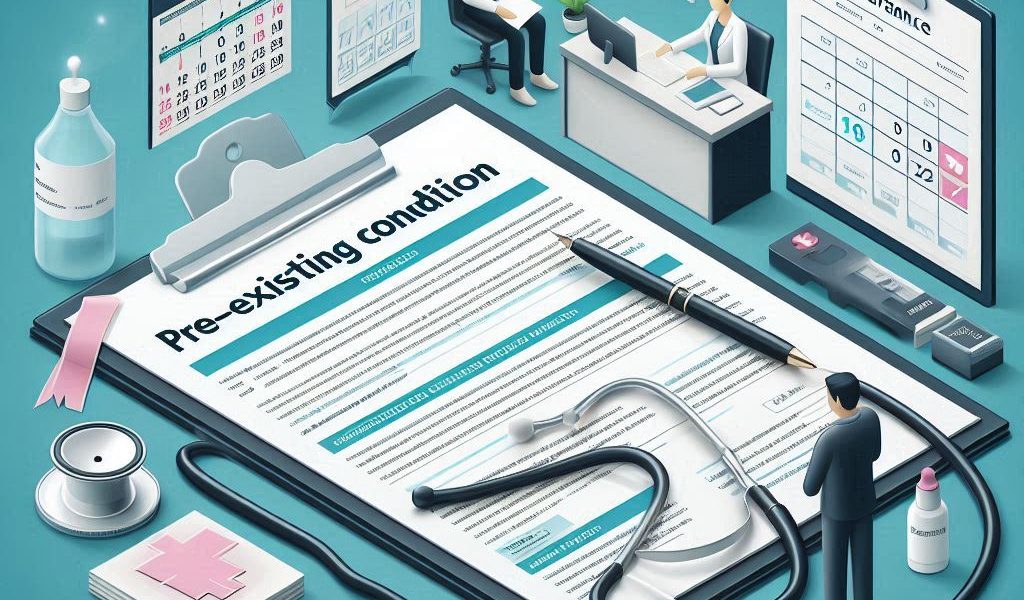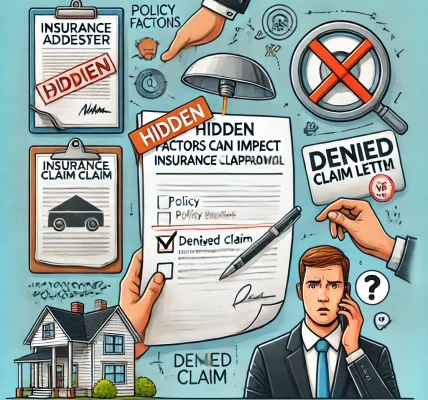Introduction
Health insurance is an essential financial safeguard that helps individuals cover medical expenses. However, one of the most debated and often misunderstood aspects of health insurance is the impact of pre-existing conditions on claims. A pre-existing condition is a health issue that an individual has before enrolling in a new health insurance policy. Understanding how pre-existing conditions influence health insurance claims is crucial for policyholders to ensure they receive the coverage they deserve while staying within legal and regulatory boundaries.
This article will explore the effects of pre-existing conditions on health insurance claims, the legal framework governing them, the challenges policyholders face, and strategies to navigate this complex aspect of insurance.
What is a Pre-Existing Condition?
A pre-existing condition is any illness, injury, or medical condition that a person has been diagnosed with or received treatment for before obtaining health insurance coverage. Common pre-existing conditions include:
- Diabetes
- Hypertension
- Asthma
- Heart disease
- Cancer
- Chronic kidney disease
Insurance companies historically viewed these conditions as a financial risk, often leading to claim denials or higher premiums. However, regulations have evolved to protect consumers from unfair practices related to pre-existing conditions.
How Pre-Existing Conditions Affect Health Insurance Claims
1. Waiting Periods
Many health insurance policies impose a waiting period for pre-existing conditions, which means that treatment for these conditions will not be covered for a specific period (e.g., 2-4 years). During this time, policyholders must bear the cost of treatment for their pre-existing illnesses.
2. Higher Premiums
Although some countries have laws preventing insurers from charging higher premiums based on health history, in places where it is permitted, individuals with pre-existing conditions often face increased insurance costs. Insurers justify this by stating that individuals with pre-existing conditions are more likely to require medical care.
3. Exclusions in Coverage
Certain insurance policies may permanently exclude coverage for pre-existing conditions. This means that any medical expenses related to these conditions will never be reimbursed under the plan. It is crucial to read the policy terms carefully to understand what is included and excluded.
4. Claim Denials
In some cases, claims related to pre-existing conditions may be denied if the insurance provider determines that the condition was not disclosed at the time of application. To avoid this, full disclosure of medical history is recommended when purchasing a policy.
5. Medical Underwriting
Some insurance companies use medical underwriting to evaluate an applicant’s health history before issuing a policy. Based on this evaluation, the insurer may offer coverage with specific conditions, charge a higher premium, or, in rare cases, deny coverage.
Legal Protections for Policyholders
Governments worldwide have introduced laws to protect consumers from discrimination based on pre-existing conditions. Some key regulations include:
1. The Affordable Care Act (ACA) – United States
The ACA prohibits health insurers from denying coverage or charging higher premiums based on pre-existing conditions. Insurers must cover essential health benefits for all policyholders without discrimination.
2. IRDAI Guidelines – India
The Insurance Regulatory and Development Authority of India (IRDAI) has mandated that insurers cannot deny claims for pre-existing diseases after the waiting period is completed. Additionally, they must clearly specify the waiting period in the policy documents.
3. Other Global Regulations
Countries such as Canada, the UK, and Australia have similar protections that prevent insurers from rejecting claims due to pre-existing conditions, ensuring fair access to healthcare coverage.
How to Navigate Pre-Existing Conditions in Health Insurance Claims
1. Disclose Medical History Honestly
When applying for health insurance, always provide accurate and complete details of your medical history. Non-disclosure can lead to claim rejection or policy cancellation.
2. Understand the Waiting Period
Before purchasing a policy, check the waiting period for pre-existing conditions. Opt for plans with shorter waiting periods or those that offer coverage from day one.
3. Choose Comprehensive Coverage
Select a health insurance plan that covers pre-existing conditions after the waiting period. Compare policies from different insurers to find the most beneficial terms.
4. Maintain Continuous Coverage
If you already have health insurance, avoid policy lapses. Many insurers offer portability options, allowing policyholders to transfer their policy to another provider without restarting the waiting period.
5. Review Policy Terms Carefully
Read the policy document thoroughly to understand inclusions, exclusions, and claim procedures. Seek clarification from the insurer if any terms seem unclear.
6. Consult an Insurance Advisor
If you are unsure about the best policy for your needs, consult a professional insurance advisor. They can guide you on the right plan and help you understand the fine print.
Common Misconceptions About Pre-Existing Conditions and Health Insurance
1. “I Can’t Get Insurance if I Have a Pre-Existing Condition”
False. Many countries have regulations that ensure people with pre-existing conditions can still obtain health insurance.
2. “My Pre-Existing Condition Will Never Be Covered”
Not necessarily. While some policies permanently exclude coverage, many offer it after a waiting period.
3. “I Can Hide My Condition to Get Cheaper Insurance”
This is a risky move. If an insurer discovers non-disclosure, they may reject claims or cancel the policy altogether.
4. “All Insurers Have the Same Rules for Pre-Existing Conditions”
Different insurers have varying policies on pre-existing conditions. Comparing different options is crucial before purchasing a plan.
Conclusion
Pre-existing conditions play a significant role in health insurance claims, influencing coverage eligibility, waiting periods, premiums, and claim approvals. While laws and regulations provide protections, policyholders must be proactive in understanding their policies and ensuring compliance with disclosure requirements.




